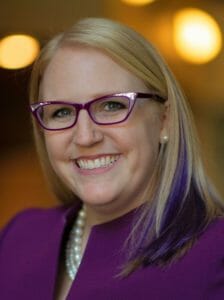
As we start preparing for holiday scheduling nightmares, I am reminded about my family’s experience with members working holidays. My grandmother’s birthday was Christmas Eve, which meant each year, our entire family of cousins, aunts, and uncles would all gather in her little living room to celebrate both Christmas and her birthday all together. Now, because of her special day, she was never open to shifting the date of our celebration if anyone wasn’t available on Christmas Eve.
My older cousin, Crissy, was a nurse. Back then, her schedule would rotate each year and she was required to work Christmas Eve every other year. That meant we didn’t get to see Crissy at the family gathering those years. She had to work and there was no changing their holiday schedule rotation.
Today, the workforce demands more flexible options and I’m certain Crissy, a hard-working, extremely caring nurse, would ask for more options. Perhaps she could switch and work Christmas each year with someone else who didn’t mind working Christmas Eve. Perhaps she could change her shift time so she could both make an appearance at our event and make it to work on time later in the day.
We’ve become so much more flexible as employers in the past decade because the employment market has shifted from giving employers an advantage, such as when it’s hard to find a job, to an employees’ market, when everyone is hiring.
While I spend most of my time training and helping senior care leaders make adjustments to better understand, lead, and retain today’s new workforce, there are certainly times when our staff need to also make some adjustments, and even sacrifices for the organization. The problem today is that many workers do not know what that looks like or the impact on the business when everyone wants to set their own schedules.
In a 24/7/365 profession, we must work together to cover all the needs of our residents. How do we meet in the middle between offering total flexibility and employee choice versus filling all the shifts? What’s needed most is mentoring.
I’ve found today that team members typically have not had exposure to the business leaders’ perspective and haven’t gained business operations acumen unless a mentor has shared that. Simply put, we must educate our team on the impact of their flexibility and choices. They don’t always connect those dots that may seem obvious to you as their boss.
We can’t just say, “We need coverage, so you all have to figure it out.” Instead, approach the problem solving as a team activity saying, “We want to provide as much flexibility and choice for you as possible, and (not “but”) at the same time, we must provide great care to our residents 24/7/365. That means we will each have to work some shifts we’d rather not since not enough people want to work all the holidays, but we’ll limit that as best we can. Who has ideas of ways we could fill this year’s holiday schedule without anyone having to sacrifice too much, including our residents?”
Also, one-on-one, it’s important to expand team members’ business acumen by asking them to put themselves in your (or the scheduler’s shoes). How would they convince their team members to work shifts that aren’t ideal?
Share how you’ve worked holidays, weekends, nights, and other unfavorable times for the good of the team, residents, and community. Then also share the pride and trust you built among your peers at the organization because of that decision. Describe how much dependability means today and exactly what that looks like. Let team members know they can stand out from the crowd and get noticed for the right reasons if they step up in this way.
Instead of judging staff with thoughts like “she should know better,” or “I shouldn’t have to tell her that,” imagine how well your mentoring could bridge the gap and deliver the behavior and scheduling coverage you need most right now!
Are you expecting everyone to follow the rules you had to obey when you started your senior care career, or can we as leaders communicate more effectively moving forward in order to create a better, more flexible and attractive place to work for all?
Workforce thought leader Cara Silletto, MBA, CSP, is president and chief retention officer at HR consulting firm Magnet Culture. She works with organizations of all sizes to reduce unnecessary employee turnover by bridging generational gaps and making managers more effective in their roles. She is the author of the book, Staying Power: Why Your Employees Leave & How to Keep Them Longer.
The opinions expressed in McKnight’s Long-Term Care News guest submissions are the author’s and are not necessarily those of McKnight’s Long-Term Care News or its editors.




